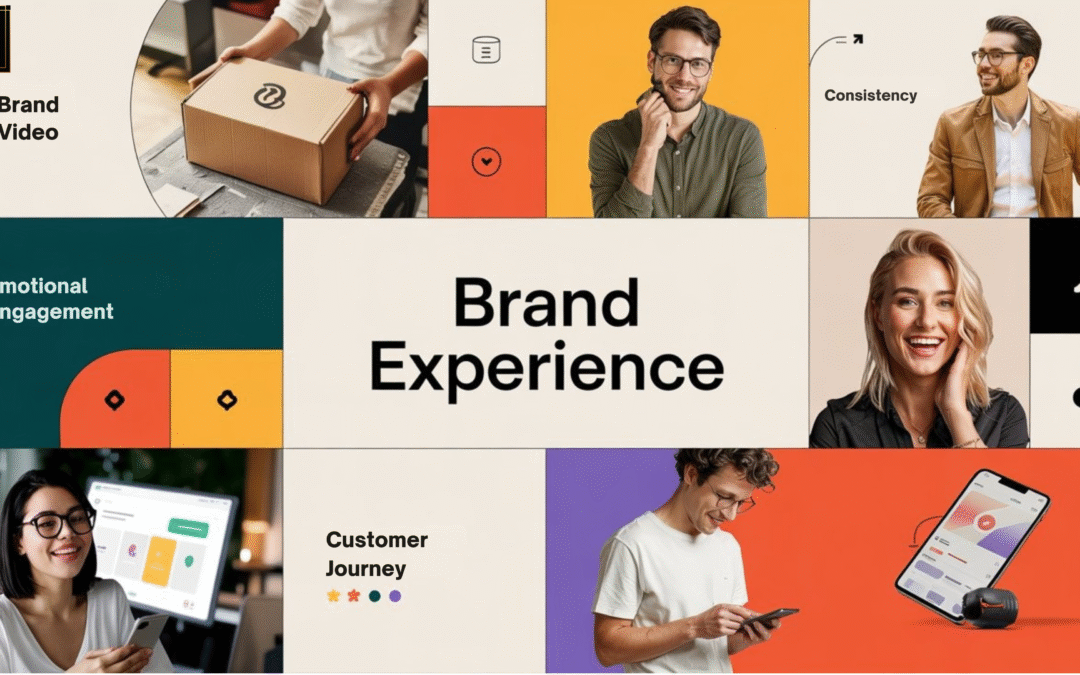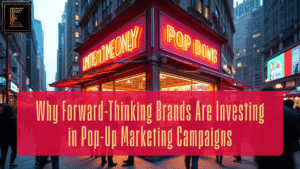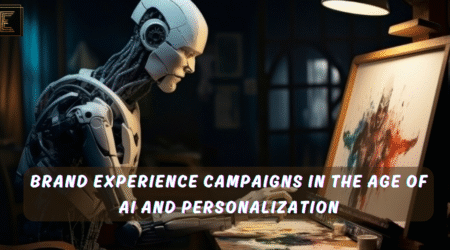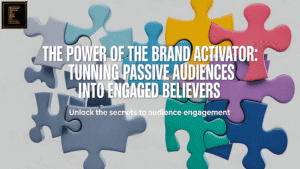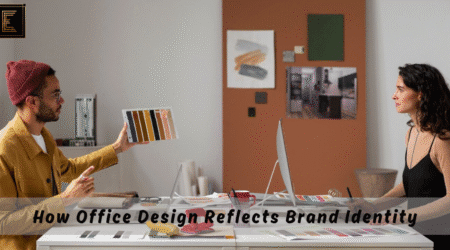Table of Contents
In a world where people are bombarded with ads and options 24/7, how do you make your brand stand out?
Simple: design a brand experience that customers will never forget.
Today, customers don’t just want to buy something — they want to feel something. They want brands that make them feel heard, valued, and emotionally connected. And that’s where brand experience comes in.
This guide breaks down what it means to design a brand experience, why it matters, and how modern brands (including yours) can master it.
What Does It Mean to Design a Brand Experience?
To design a brand experience means crafting every interaction your customer has with your business — from the first social media scroll to post-purchase support — in a way that is:
- Consistent
- Emotional
- Memorable
- Customer-centric
It includes everything from your logo and website to how your team speaks to customers and how your packaging feels in their hands. Think Apple, Starbucks, and Airbnb. They don’t just sell products. They sell stories, feelings, and experiences.
Why Brand Experience Is Crucial for Modern Brands
In today’s competitive landscape, brand experience isn’t optional — it’s essential.
Here’s why:
- 73% of consumers say experience is a key factor in purchasing decisions
- A consistent brand experience can increase revenue by up to 23%
- Brands that create emotional connections enjoy 3x more word-of-mouth marketing
Bottom Line: When you design a brand experience that resonates, you build loyalty, trust, and advocacy.
4 Core Elements to Design a Brand Experience
Creating a strong brand experience isn’t just about good looks. It’s about crafting meaningful moments across all touchpoints.
Here are the pillars:
| Pillar | Description |
| Consistency | Visuals, tone, and messaging must align across every platform |
| Emotional Engagement | Storytelling and authenticity drive connection |
| Sensory Appeal | Design, scent, sound, and packaging all add to the experience |
| Customer-Centricity | Every step should be built around the customer’s needs |
How to Design a Brand Experience: Step-by-Step Guide
Want to start designing a killer brand experience? Here’s your roadmap:
1. Define Your Brand Identity
- What do you stand for?
- What are your values, mission, and tone?
- Create a brand style guide that outlines your visuals and voice
2. Map Your Customer Journey
- List all touchpoints (online and offline)
- Identify key moments where you can delight or disappoint
- Optimize each step for smooth, on-brand interaction
3. Create a Consistent Look & Feel
- Use the same colors, fonts, and tone everywhere (website, packaging, emails, social media)
- Align visuals with emotions you want to evoke
4. Personalize the Experience
- Use data and technology to personalize messaging, recommendations, and offers
- Address customers by name, remember preferences, and follow up meaningfully
5. Engage Across All Touchpoints
- From ads to unboxing, every interaction matters
- Send thank-you emails, birthday messages, loyalty rewards, and behind-the-scenes content
6. Train Your Team to Be Brand Ambassadors
- Your employees are your brand
- Make sure they reflect your values in how they treat customers
7. Measure, Listen, Improve
- Use surveys, reviews, and feedback loops
- Regularly assess what’s working and where you can improve
Mistakes to Avoid When You Design a Brand Experience
Even the best brands can fall short if they make these common mistakes:
- Inconsistency – Different tone on social media vs. customer support
- Too much focus on visuals – Design without emotional impact won’t stick
- Ignoring feedback – Customer insights are gold
- Copying competitors – Your experience should be authentic to your brand
Brands That Nail the Brand Experience Game
Want inspiration? Here are brands that truly know how to design a brand experience:
| Brand | What They Do Right |
| Airbnb | Seamless digital-to-real-world experience that feels like home |
| Glossier | Builds community and creates a visually consistent, authentic vibe |
| Zappos | Puts customer service at the heart of every touchpoint |
| Apple | Minimal design, sleek packaging, premium retail experience |
Real Talk: What Makes an Experience Unforgettable?
If you want to design a brand experience that lasts in people’s hearts and minds:
- Make it personal
- Make it emotional
- Make it shareable
- Make it consistent
Ask yourself:
“Would I remember this interaction a week from now?”
If not — improve it.
Final Thoughts
In 2025 and beyond, the brands that win won’t be the ones with the biggest ads.
They’ll be the ones that design a brand experience so powerful, customers become loyal fans and brand advocates.
So take the leap — refine your customer journey, add those emotional touches, and show your audience that your brand is more than just a product. It’s a feeling.
FAQs
1. What does it mean to design a brand experience?
It means creating a journey for customers that feels consistent, emotional, and aligned with your brand values — from start to finish.
2. Why is brand experience important in marketing?
Because emotional connection drives customer loyalty, word-of-mouth, and repeat business — more than just discounts or product features.
3. How can I make my brand experience unique?
By understanding your audience deeply, staying true to your brand identity, and consistently delivering personalized, meaningful interactions.
4. Can small businesses design a brand experience too?
Absolutely! Small businesses often have the advantage of being more personal and flexible in creating memorable touchpoints.
5. What’s the first step to designing a brand experience?
Start by defining your brand’s mission, values, tone, and visuals — then map out the customer journey to build consistent experiences across all touchpoints.

